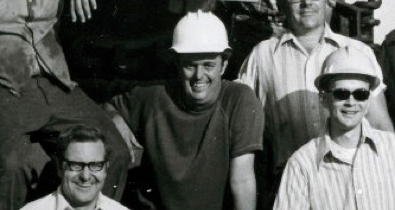By Patrick Svitek of the Fort Wayne Journal Gazette
NEW HAVEN – Momentarily sitting alone inside a vintage train Saturday morning, Santa Claus found himself in a rare position: fighting for children’s attention.
“They’re more concerned about the train than Santa,†he said as some parents pried their children away from the lookout compartment so they could quickly share their wish lists. “Santa’s just the icing on the cake. It’s really something.â€
Although both attractions have been part of the name of the Fort Wayne Railroad Historical Society’s Santa Train, this year’s run highlighted a renewed focus on Santa.
Because of the event’s growing popularity, the society added another caboose to the annual Christmas-themed train ride, said Tom Nitza, railroad historical society training manager.
More than 1,600 riders boarded the diesel, electric, switch-engine train through the end of Saturday – the third and last date for this year’s Santa Train program, according to a preliminary tally by Kelly Lynch, the society’s communications manager. That final count is nearly double the event’s three-day attendance when it first started about 13 years ago, Nitza added.
By noon Saturday, a line of nearly 50 ticket holders waiting for the next train stretched toward the back of the society’s restoration facility in New Haven, almost bumping into a closed-off work area.
Fort Wayne resident Henry Rivera had no qualms about the increasing wait after stepping off the Santa Train with his wife and children.
“First of all, (we did it) because he loves trains,†Rivera said, motioning toward his 3-year-old son. “And that’s the first thing we know that has trains close to home.â€
Saturday marked the first Santa Train rides for Fort Wayne resident Dan Farrimond and his 2-year-old grandson, who he described as “in love with the trains.â€
Farrimond said he was especially pleased with how affordable the entire experience was – $4 per rider – when compared with other city draws like the zoo or, during less chilly days, public swimming pools. He also hailed what he viewed as a dying breed of a Christmas attraction in the Midwest.
“Especially when looking online, there aren’t that many,†Farrimond said. “It’s a novelty. For them to have something like this in Fort Wayne, I’m very grateful.â€
“It’s a lot different,†Santa said. “The train is fascinating. It’s something none of these kids have ever done.â€


